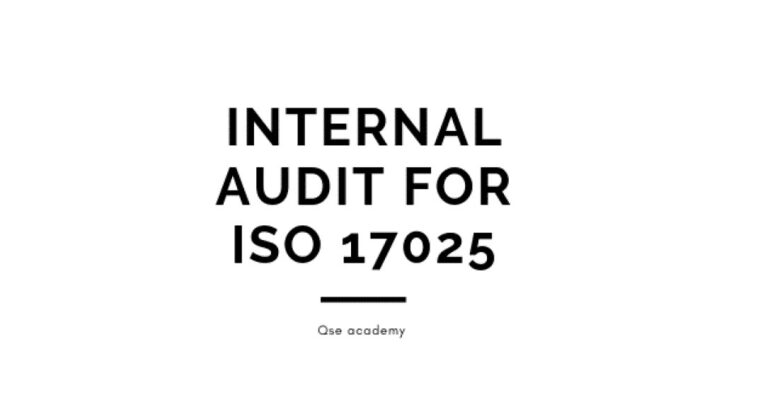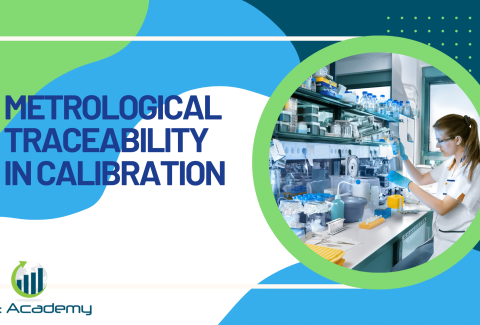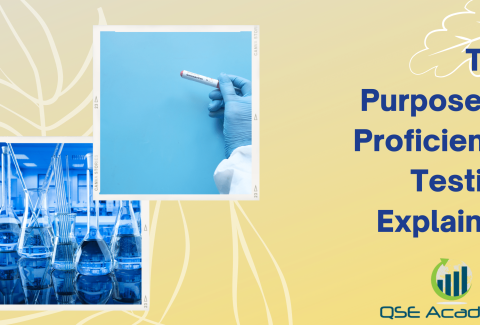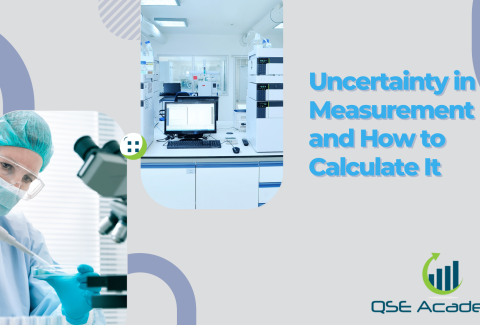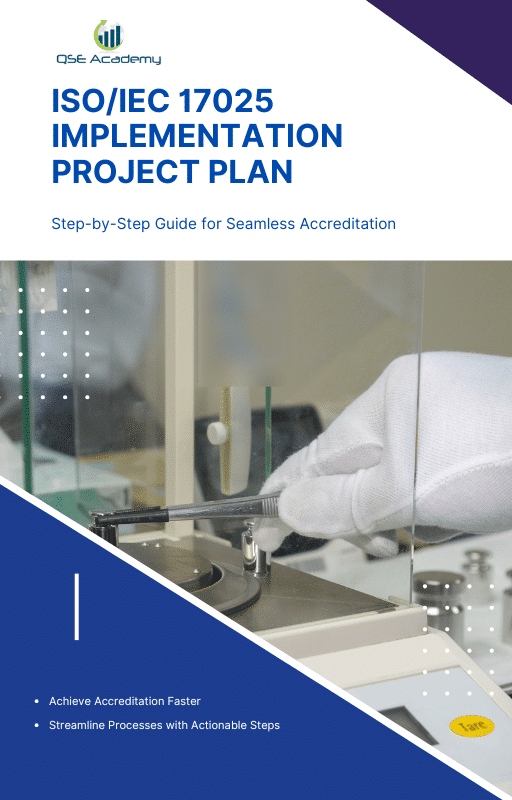Internal Audit for ISO 17025
Internal Audit for ISO/IEC 17025
If your lab is accredited—or planning to be—then you’re probably familiar with the idea of internal audits. But when it comes to meeting the actual requirements of ISO/IEC 17025, internal audits are more than just a routine checklist. A well-planned Internal Audit for ISO/IEC 17025 helps you uncover nonconformities, keep your processes sharp, and ensure your quality system is working as intended.
Think of it like a regular health check for your lab. It’s your chance to pause, assess, and make sure everything aligns with both the standard and how your lab actually operates. And the best part? You’re the one in control.
In this article, we’ll break down what a compliant Internal Audit for ISO/IEC 17025 looks like—from planning and scope to execution and follow-up. Whether you’re doing it for the first time or just want to make it more effective, we’ll walk through the essentials in a way that’s clear, practical, and easy to apply in any lab setting.
Purpose of Internal Audits in ISO/IEC 17025
Let’s start with the “why.” Why is an Internal Audit for ISO/IEC 17025 such a big deal? The short answer: because it’s one of the most effective tools a laboratory has to keep its quality management system in check—before problems arise.
According to Clause 8.8 of the ISO/IEC 17025:2017 standard, internal audits are required to verify that the lab is conforming to its own procedures and the standard itself. In other words, you’re checking whether what’s written down is what’s actually happening in day-to-day operations.
A properly done Internal Audit for ISO/IEC 17025 gives you a chance to:
-
Catch nonconformities before an external auditor does
-
Identify areas where procedures aren’t being followed—or where they’re outdated
-
Confirm that technical activities (like sampling, calibration, or testing) are done correctly and consistently
-
Check that the management system is functioning the way it was designed
What makes this especially important under ISO/IEC 17025 is that internal audits aren’t just about documentation—they also focus on technical competence. That means reviewing things like:
-
Are your analysts trained and authorized for specific methods?
-
Is equipment calibrated, maintained, and traceable?
-
Are results reported correctly, with the proper uncertainty evaluations?
A strong Internal Audit for ISO/IEC 17025 looks at both the paperwork and the practical work. That’s what makes it such a powerful tool—not just for compliance, but for keeping your lab accurate, consistent, and trustworthy.
Next, let’s dive into how to plan an internal audit, because getting the timing, scope, and independence right makes all the difference.
Planning the Internal Audit for ISO/IEC 17025
Now that we’ve covered why internal audits matter, let’s talk about how to plan one. Because here’s the truth: a successful Internal Audit for ISO/IEC 17025 doesn’t start on audit day—it starts weeks (or even months) before, with a solid plan.
ISO/IEC 17025 doesn’t dictate exactly how often you have to audit each process, but it does require that you audit all areas of your management system and technical operations over a defined period. Most labs choose an annual internal audit cycle, but how you divide it up is entirely up to you.
Here’s how to build a smart, flexible audit plan:
-
Set an audit schedule: Map out the entire year. You don’t have to audit everything at once—you can split it into smaller audits by department, activity, or clause of the standard.
-
Prioritize based on risk: Focus more often on areas that have frequent issues, customer complaints, or new processes. A risk-based approach makes your Internal Audit for ISO/IEC 17025 more meaningful.
-
Define the scope: Be clear about what each audit will cover. Will you look at equipment control? Technical records? Personnel training? Clear scopes help auditors stay focused.
-
Ensure auditor independence: This is a big one. The person conducting the internal audit shouldn’t audit their own work. If that’s tricky in a small lab, consider rotating roles or bringing in a trained external auditor.
Another important piece of planning your Internal Audit for ISO/IEC 17025 is aligning it with other parts of your system. For example, you can schedule audits ahead of your management review so you can feed findings directly into that discussion.
With a clear plan, your audit doesn’t have to feel rushed or chaotic. It becomes a structured part of your lab’s rhythm—something you can manage proactively rather than reactively.
Next, we’ll explore what to actually include in your audit so that you’re covering all the right ground—both on the management side and the technical side. Let’s keep going!
What to Include in an Internal Audit for ISO/IEC 17025
So, what exactly should you look at during an Internal Audit for ISO/IEC 17025? The answer is both broad and specific. Broad, because you need to cover your entire management system and technical operations. Specific, because you’ll need to dig into particular processes, documents, and actions to see how well they align with the standard.
Let’s break it down.
Start with the Management System
This is the part that covers your policies, procedures, records, and how your lab is organized to meet ISO/IEC 17025 requirements. A thorough Internal Audit for ISO/IEC 17025 should include reviews of:
-
Document and record control
-
Quality objectives and policies
-
Risk management activities
-
Internal communication and responsibilities
-
Previous audit findings and corrective actions
You’re basically checking: Are we doing what we say we do? And is it working?
Don’t Skip the Technical Side
Here’s where ISO/IEC 17025 gets serious. Your internal audit should go beyond the office and into the lab. That means reviewing technical operations to confirm they meet both the standard and your lab’s own procedures.
During your Internal Audit for ISO/IEC 17025, include:
-
Staff competence and training records
-
Method validation or verification
-
Equipment calibration, maintenance, and traceability
-
Sampling procedures and handling
-
Reporting and review of test or calibration results
Use a mix of methods—document review, observation, and interviews—to gather objective evidence. And always be sure to audit against your own procedures as well as the ISO/IEC 17025 clauses.
Audit What Matters Most
One of the smartest ways to structure your Internal Audit for ISO/IEC 17025 is to focus on high-impact areas first. If a certain process is new, has caused issues before, or directly affects results—put it at the top of your audit scope.
By covering both the management and technical components, you’ll ensure your audit doesn’t just meet the minimum—it actually gives you useful insights you can act on.
Next up, we’ll walk through how to conduct the audit itself—step by step—so you feel confident and in control on audit day. Let’s dive in!
How to Conduct the Internal Audit
Now that you’ve got your plan and scope in place, it’s time to actually conduct the audit. This is where everything comes together. A well-executed Internal Audit for ISO/IEC 17025 helps you uncover not just nonconformities, but opportunities to improve how your lab operates every day.
Let’s walk through it step by step—no stress, no guesswork.
Start with Preparation
Before stepping into the lab or opening a file, take a little time to prepare. Review the relevant procedures, previous audit findings, and any updates in your management system. If you’re auditing a technical activity, make sure you understand the method and the related ISO/IEC 17025 requirements.
A good Internal Audit for ISO/IEC 17025 starts with a checklist—customized to your lab. This helps guide your questions and keeps your audit focused on what really matters.
Observe, Ask, and Record
During the audit, your job is to gather objective evidence. That means:
-
Watching how procedures are actually performed
-
Asking staff how they follow processes
-
Reviewing records and documents
-
Comparing what’s happening in real time to what your procedures say
This is where things get interesting. A strong Internal Audit for ISO/IEC 17025 doesn’t just check boxes—it explores whether the system is actually working. You might notice, for example, that calibration records are present—but not signed. Or that a test method is being performed slightly differently than written.
When you spot something, take note. But don’t jump to conclusions. Ask open-ended questions like:
-
“Can you walk me through how you do this step?”
-
“Where is that recorded?”
-
“Has this process changed recently?”
These questions help uncover not just nonconformities, but root causes.
Keep It Respectful and Supportive
One of the most important parts of conducting an Internal Audit for ISO/IEC 17025 is your tone. You’re not there to catch people doing something wrong—you’re there to help the lab stay accurate and consistent. Approach the audit like a peer review, not an interrogation.
Staff should feel comfortable sharing concerns or inconsistencies. Sometimes, they’ll even highlight issues you might’ve missed.
Once you’ve gathered your evidence, it’s time to wrap up with clear notes and findings. Next, we’ll look at how to report what you found and manage follow-up actions to keep your system strong and responsive. Let’s keep going!
Managing Audit Findings and Driving Improvement
Once your audit is complete and the observations are documented, it’s time to shift gears—because how you handle findings is just as important as finding them in the first place. One of the core goals of an Internal Audit for ISO/IEC 17025 is not just to identify gaps, but to use them as a springboard for improvement.
So, let’s walk through how to report findings clearly and turn them into meaningful action.
Writing Clear, Useful Findings
Your findings should be easy to understand and focused on facts. Avoid vague statements like “procedure not followed.” Instead, be specific:
-
“Calibration certificate for Balance B-102 was missing from the equipment file.”
-
“Staff member performed pH testing but was not listed on the competency matrix.”
During an Internal Audit for ISO/IEC 17025, it’s important to tie each finding to the relevant clause of the standard or your internal procedure. This shows that you’re auditing both compliance and consistency—and that you understand the link between the system and real-life lab activities.
Assigning Corrective Actions
Once findings are documented, the next step is assigning responsibility. Who will investigate the root cause? Who will implement the fix? What’s the timeline?
A good Internal Audit for ISO/IEC 17025 doesn’t leave issues hanging. It includes:
-
A clear deadline for the corrective action
-
Evidence that the root cause was analyzed (not just the symptom)
-
Documentation of what was changed—procedure, training, process, etc.
You’re not just correcting errors. You’re making your system stronger and more reliable.
Follow-Up and Verification
Before you close out an audit, take one last step: verify that the action was effective. This might mean checking that a new form is being used, confirming that training has occurred, or reviewing updated records.
In any Internal Audit for ISO/IEC 17025, follow-up shows your commitment to continuous improvement. It also ensures that problems don’t repeat—and that your fixes are actually working in real conditions.
By treating audit findings as opportunities, not failures, you build a quality culture where everyone contributes to improving the system.
Up next, we’ll look at how to connect all of this back to your lab’s bigger picture—using audit results to inform decisions, reviews, and overall system health. Let’s bring it full circle
Tying Everything Back to the Management System
At this point, you’ve completed your audit, documented the findings, and followed up with corrective actions. But there’s one more step that really ties everything together—making sure your Internal Audit for ISO/IEC 17025 feeds directly into your lab’s broader management system.
ISO/IEC 17025 isn’t just about fixing problems as they come up—it’s about running a system that’s continually learning and improving. And your internal audit is one of the strongest tools to make that happen.
Feed Results into Management Review
Clause 8.9 of the ISO/IEC 17025 standard requires your lab to perform a management review. That review should include, among other things, the results of your internal audits. So instead of treating the Internal Audit for ISO/IEC 17025 as a stand-alone activity, it should directly inform your leadership team.
During the review, ask:
-
What trends did we see in our audit findings?
-
Were any issues recurring or systemic?
-
Have previous corrective actions actually worked?
-
What opportunities did the audit uncover?
When your internal audits help guide strategic decisions, they go from being a checkbox activity to a real driver of quality.
Use Audit Data to Spot Patterns
Over time, the findings from your Internal Audit for ISO/IEC 17025 will tell a story. Maybe certain processes need more attention. Maybe training gaps are more common in a specific area. Or maybe your documentation system needs a refresh.
This is where the real value of internal auditing shows up—not just in individual corrections, but in the patterns you can identify and act on.
Keep the System Aligned
One of the best things you can do after each Internal Audit for ISO/IEC 17025 is check that your quality documentation still reflects what’s happening in practice. If procedures were updated as a result of findings, make sure those updates are rolled out, communicated, and implemented.
This ongoing alignment is what makes your system truly “alive.” It means your policies, procedures, and day-to-day practices are in sync—which is exactly what ISO/IEC 17025 is all about.
So don’t stop at the checklist. Let your internal audits shape how your lab operates, improves, and succeeds. When done right, an Internal Audit for ISO/IEC 17025 becomes more than a requirement—it becomes a built-in quality compass for your entire organization.
I hold a Master’s degree in Quality Management, and I’ve built my career specializing in the ISO/IEC 17000 series standards, including ISO/IEC 17025, ISO 15189, ISO/IEC 17020, and ISO/IEC 17065. My background includes hands-on experience in accreditation preparation, documentation development, and internal auditing for laboratories and certification bodies. I’ve worked closely with teams in testing, calibration, inspection, and medical laboratories, helping them achieve and maintain compliance with international accreditation requirements. I’ve also received professional training in internal audits for ISO/IEC 17025 and ISO 15189, with practical involvement in managing nonconformities, improving quality systems, and aligning operations with standard requirements. At QSE Academy, I contribute technical content that turns complex accreditation standards into practical, step-by-step guidance for labs and assessors around the world. I’m passionate about supporting quality-driven organizations and making the path to accreditation clear, structured, and achievable.
Related Posts
Popular tags
Recent Posts
Recent Comments
- Engr. Shamsuddeen Dalhatu on ISO 9001 Requirements Checklist: A Comprehensive Guide
- Lakshman Balajepalli on How to get GMP certification?
- Hani alghamdi on What is the difference between AS9100 and ISO 9001?
- keberku on Simple method to ensure confidentiality in laboratories for ISO/IEC 17025
- Abdullatif Al Najim on Procedure for Externally Provided Products and Services in ISO 17025
Subscribe on YouTube
Product tags
Popular Courses

